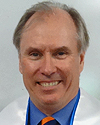

Graduating from an under-resourced high school in Canoga Park, Calif., a predominantly Hispanic section of Los Angeles, Oswaldo Galicia knew an engineering college major would be a challenge.
"There are very few AP courses offered, and most of them did not prepare you adequately to pass the exams, especially in math and science," he says. "In AP Calculus and AP Physics, only one or two students would actually pass the exam out of about 25 to 30 students."
He adds, "I was one of only about five students that pursued a degree out of state from a class of about 300. The freshman class starts with about 700-900 students and by graduation time, only about 250 to 300 graduate."
So he wasn't sure in 2010 how he'd fare in Bucknell University's elite engineering program, even as a participant in the Lewisburg, Pa., private school's new support program, Engineering Success Alliance (ESA).
Galicia says program architects also weren't sure how it would contribute to his success at Bucknell and that of his 13 peers in the inaugural ESA group.
Four years later, Galicia has graduated with two dean's-list appearances and is set to start this fall in an environmental engineering masters' track at the University of Southern Florida, combined with two years of Peace Corps work.
Ten ESA peers also graduated, or will in 2015, with five-year engineering-business degrees.
 |
| Pierson |
ESA participants must be invited into the program; standards are not lowered. Some, like Galicia, also have involvement in the Posse Foundation scholarship program that recruits public high school students to boost college diversity.
"The statistics say that if you get through your first two years of engineering, you will graduate," says Pierson. "These kids have the talent, just not the base-level grounding."
PB committed $250,000 to launch the program, with investment also from STV, Goldman Sachs and several foundations, Pierson says.
Funds now support a math lab, dedicated study space, an extended orientation program, project-site visits for first-year students and just-selected permanent director Jason Milner.
Pierson says PB has extended its financial support for another five years and aims to raise $1 million to keep the program self-sustaining—and replicated at other schools.
 |
| Marosi |
PB has hired an ESA graduate, as have Air Products & Chemicals, Avery Dennison and Nestlé. Others also are headed to graduate school. Two switched majors but are Bucknell grads, and one left school for personal reasons.
Marosi says ESA could have up to 60 participants next year.
Galicia says he never considered dropping engineering, even while working several campus jobs.
"But I had to always remind myself why I wanted to struggle through pursuit of this major. It only makes your degree that much more worth it. ESA gave us the tools necessary to be on an equal playing field with everyone else."





Post a comment to this article
Report Abusive Comment